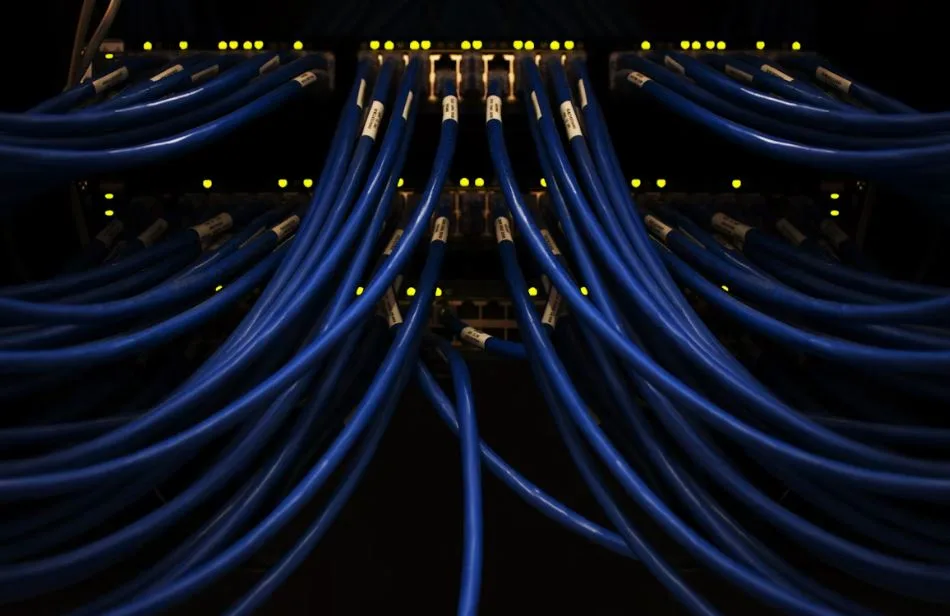What Is the Average Type of Internet Connection & Speed for Businesses?
In today’s fast-paced digital landscape, a reliable internet connection is a fundamental business need. Whether you’re a small startup or a growing enterprise, your day-to-day operations likely depend on seamless connectivity. From internal communications and cloud-based tools to customer support and online transactions, every aspect of business hinges on internet performance.
Yet, with various connection types and service plans flooding the market, many businesses find it challenging to determine what they need. The choice is about reliability, scalability, and cost-effectiveness. Understanding common internet types and speed needs helps businesses choose wisely for efficiency and growth.
So, what connection types are most commonly used today, and what speeds are typically required to keep business operations running smoothly? Let’s break it down.
Why Reliable Internet Matters for Modern Businesses
Whether it’s for cloud-based applications, data transfers, or customer service platforms, steady connectivity drives productivity and overall operational success. Even minor downtime or slow speeds can result in significant disruptions, lost opportunities, and a damaged reputation.
For businesses competing in a global market, reliability is a necessity. Whether a startup or a large enterprise, internet reliability impacts everything from internal collaboration to customer experience. That’s why partnering with a trusted business internet provider is crucial for ensuring consistent performance and long-term growth.
According to WOW! Business, every business owner should weigh these key factors before choosing a service provider:
- Speed: Fast enough to meet daily demands
- Reliability: Consistent uptime with minimal disruptions
- Value: Fair pricing for the offered services
- 24/7 Support: Round-the-clock technical assistance
Common Types of Business Internet Connections
Businesses can choose from various internet connection types, each having unique benefits and limitations:
- Fiber-Optic Internet: Known for ultra-high speed, fiber offers symmetrical upload and download rates with low latency. It’s ideal for data-heavy operations, multiple users, and real-time applications. Though often more expensive, it provides unmatched reliability and scalability.
- Cable Internet: A popular choice among small to medium businesses, cable offers good speed at a moderate price. It supports everyday operations like browsing, VoIP, and cloud usage. However, speeds may fluctuate based on local network traffic.
- DSL (Digital Subscriber Line): Using telephone lines, DSL is budget-friendly and suitable for basic tasks like emails and web browsing. However, it offers lower speeds and may not be ideal for businesses needing high bandwidth.
- Satellite Internet: Common in remote or rural areas, satellite provides broader coverage but comes with higher latency and potential weather interference. It’s more of a fallback option where wired connections aren’t available.
- Fixed Wireless: This option delivers internet via radio signals and is useful in areas lacking wired infrastructure. It offers decent speed but can be affected by environmental factors like signal obstruction.
Fiber-optic internet remains one of the most preferred choices among Americans. The Fiber Broadband Association (FBA) found that most Americans see fiber broadband as the most reliable, high-speed internet option. Other connection types are viewed as falling short of meeting both current and future digital demands.
What Is the Average Internet Speed for Businesses?
Internet speed requirements vary based on business size, industry, and operational demands. Here’s a general overview:
- Small Businesses (1-10 users): Speeds between 50 Mbps and 150 Mbps are typically sufficient. These speeds handle emails, browsing, cloud applications, and occasional video calls.
- Medium Businesses (10-50 users): With more users and data usage, speeds ranging from 300 Mbps to 500 Mbps are preferable. These support video conferencing, file sharing, and continuous cloud access without lag.
- Large Enterprises (50+ users): They require 1 Gbps or higher, especially when running bandwidth-intensive applications, server hosting, or global communications.
Business internet speed needs depend greatly on the nature of daily operations. This is particularly true as businesses now depend on high-speed connectivity for most of their operations. Today, AI is at the heart of business operations, forcing companies to quickly adapt to shifting currents.
A Stanford HAI study highlights the rapid usage of AI in business. The study shows that about 78% of companies used AI in 2024, a sharp increase from 55% in 2023. At the same time, research consistently shows that AI not only improves productivity but also helps close skill gaps within the workforce.
As a result, businesses increasingly rely on fast, reliable internet connections to power AI-driven tools and ensure smooth daily operations.
Choosing the Right Connection for Your Business Needs
Selecting the right internet connection involves evaluating several key factors:
- Business Size & User Count: More users need higher bandwidth to avoid slowdowns.
- Operational Activities: Activities like video conferencing, VoIP, large data uploads, and cloud computing require faster connections.
- Location: The availability of high-speed connections like fiber or cable depends on your business’s geographic location.
- Budget Constraints: While fiber offers superior performance, it may come at a premium. Balancing cost with speed and reliability is crucial.
This balancing act becomes even more critical in today’s financial climate. Businesses, especially small and medium-sized enterprises (SMBs), are navigating acute financial pressures, making it imperative to choose an internet provider that offers both affordability and reliability. This is particularly important given the ongoing rise in operational costs.
According to the 2025 Report on Employer Firms, rising costs of goods, services, and wages remain the most common financial challenge, cited by 75% of firms. Additionally, 56% of businesses reported difficulties in paying operating expenses, while 51% faced issues with uneven cash flows.
With these mounting pressures, SMBs must evaluate connectivity options not just on technical merit but on overall value. This will ensure that their choice supports both operational efficiency and financial sustainability.
Frequently Asked Questions:
1. What is a good internet speed for a small business?
For small businesses, a speed range of 50 to 150 Mbps is usually sufficient. This supports everyday tasks like emails, web browsing, light cloud usage, and video conferencing for a small team. If your business frequently uploads files or hosts virtual meetings, opting for the higher end of this range is wise.
2. Is fiber internet better than cable for businesses?
Yes. Fiber internet delivers higher speeds, symmetrical upload and download rates, and lower latency compared to cable. This makes it ideal for businesses with high data demands or remote teams. While fiber may have a higher price point, the enhanced performance and reliability often justify the investment.
3. How can a business determine the right internet speed?
Evaluate your daily operations, the number of users, and tasks requiring high bandwidth. Consider factors like video conferencing, large file uploads, and cloud usage. Consulting your ISP for tailored business plans can help you choose a connection that matches your needs.
Today, reliable and high-speed internet has become a critical component of business success. Understanding the types of connections available and their average speeds helps ensure you choose a service that meets your operational demands. A strong connection keeps your business competitive and ready for future challenges.






